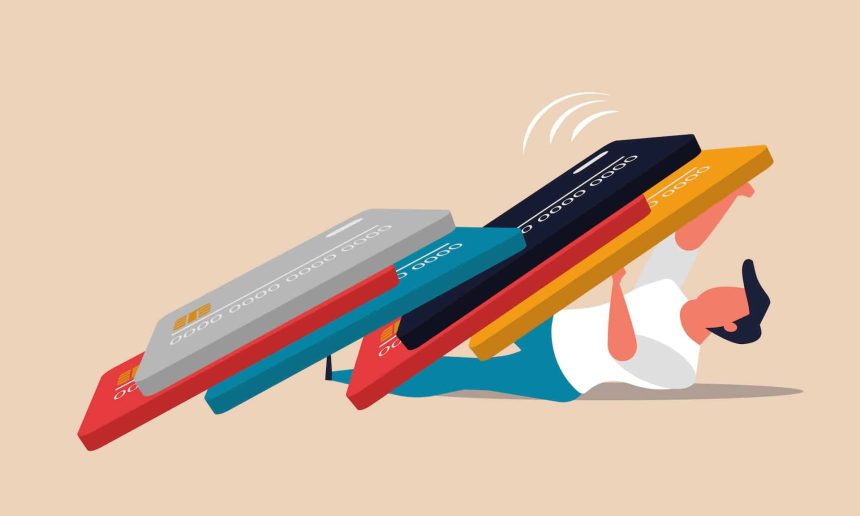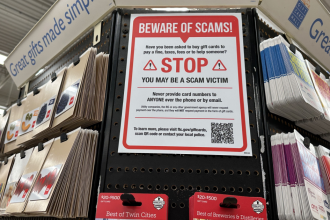Credit Sesame examines the latest trends in rising consumer debt, from surging credit card balances to increasing delinquencies—and what it could mean for borrowers.
Government reports on consumer borrowing are starting to feel like the boy who cried wolf. Every quarter brings another warning—household debt is rising, borrowing is surging—yet the economy keeps moving, and people keep spending.
It’s easy to dismiss record-breaking debt as just business as usual. But in the fable, the boy was ignored one too many times … and in the end, the wolf was real.
Another quarter, another new record for rising consumer debt
The Federal Reserve Bank of New York recently released its Household Debt and Credit Report for the fourth quarter of 2024. The report showed that total household debt had reached a new high again.
Total household debt rose by $93 billion during the quarter to $18.036 trillion. This is the first time household debt has exceeded the $18 trillion mark.
If that didn’t make many headlines, don’t be surprised. It’s not big news for household debt to set a new record. It has now done so for 18 straight calendar quarters. That’s four-and-a-half years’ worth, during which time household debt has risen by $3.77 trillion.
How much debt is too much?
With household debt rising so consistently, it begs the question of how much consumer debt is too much.
The answer to that may not be a specific dollar figure. It’s more a matter of how well people are handling that debt. The disturbing thing is that Americans increasingly struggle with their debt payments.
The percentage of debt that became 90 days or more overdue increased in the fourth quarter for credit cards, mortgages, car loans, and HELOCs. Of the major loan categories tracked by the New York Fed, only student loans saw the transition into serious delinquency slow in the fourth quarter.
The biggest problem with payment delinquency is in credit card debt. The percentage of credit card balances that are 90 days or more overdue is now the highest since the end of 2011.
Back then, the economy was still recovering from the Great Recession. Now, the economy has benefitted from 11 straight quarters of economic growth and 49 consecutive months of job growth. If people have such trouble paying their credit card bills now, imagine what would happen in a recession.
Debt is getting more expensive
Not only is the total amount of household debt rising, but consumers took on more of the most expensive forms of debt last quarter.
Overall, mortgage debt represents the most significant type of consumer debt. It comprises $12.6 trillion of the $18 billion total. This is a relatively good type of debt to have – mortgage rates are generally low compared to other forms of consumer debt, and since this debt is used to purchase property, it is offset by an asset.
However, the largest debt consumers took on last quarter was credit card debt. Credit card debt rose by $45 billion in the fourth quarter. That’s far more than the $11 billion in mortgage debt added during the same period and nearly half of the total addition to consumer debt.
This is a problem because, with an average interest rate of nearly 23%, credit card debt is a costly form of consumer debt. Also, because it’s unsecured, credit card debt is often not offset by purchasing an asset with lasting value.
In short, credit card debt makes a hefty addition to consumer debt burdens. So, opting for more of this type of debt than any other was another negative trend in the fourth quarter of 2024.
3 things consumers need to do
National statistics represent what consumers as a group are doing. However, individuals can make their own choices about how they handle their debt.
Given recent debt trends, here are three choices you should consider:
- Refinance high-interest debt. With its high interest rates, credit card debt is a prime candidate for refinancing. You can generally get a much lower rate from a personal loan or use a balance-transfer credit card if you can pay off your balance within the introductory rate period.
- Start debt levels heading in the right direction. Large debt balances generally can’t be paid off all at once. Your first goal should be to reverse the direction of the trend – from rising balances to falling ones. If you get the trend heading in the right direction, eventually, you’ll reach your goal.
- Protect your credit score to maintain access to affordable credit. As payment delinquencies and defaults rise, lenders are getting stricter about who they’ll give credit to. Working on your credit score can help you retain access to credit in this environment and qualify you for better interest rates.
The Household Debt and Credit Report didn’t offer much good news. When debt keeps climbing, and delinquencies rise, it’s a signal to take control. Now is the time to break the cycle and move in a better financial direction.
If you enjoyed Rising consumer debt keeps setting records, but can borrowers keep up? you may like,
Disclaimer: The article and information provided here are for informational purposes only and are not intended as a substitute for professional advice.
Read the full article here














